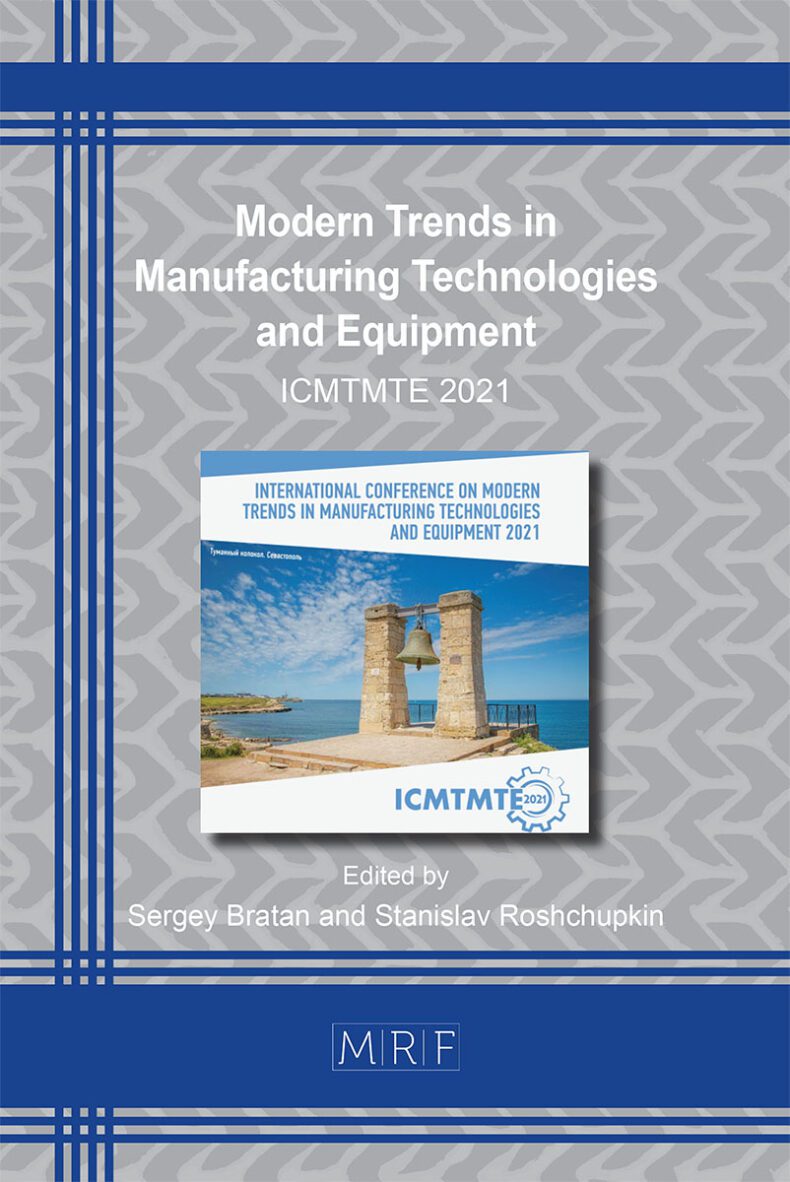Influence of Grain Shape in Grinding Wheels on the Machining Quality of Bearing Rings
Alexander Korotkov, Vitaly Korotkov, Nikolay Prokaev
download PDFAbstract. The quality of grinding of bearing races is related to their performance and durability. The aim of this work is to establish how the machining quality of bearing rings depends on the characteristics of grinding wheels, in particular, on such a parameter as the shape of abrasive grains. Several batches of experimental grinding wheels were made, containing grains of different shapes (from isometric to lamellar varieties). Quantitatively, the shape of the grains was estimated by the shape factor parameter (SF), which is equal to the ratio of the diameters of inscribed and circumscribed circles in the contours of the used grains. The shape factor was determined using a scanner or a digital microscope and a special computer program. The tests were carried out on circular, plunge, and finishing grinding, using coolant, on a SIW 4E machine in a bearing factory. The machining quality of the bearing rings was assessed by studying the microstructure, microhardness and roughness of their bearing races. The durability of grinding wheels was determined by the number of machined rings before maximum tool wear. It has been established that by a differentiated approach to the choice of grain shapes in the wheel, it is possible to significantly increase its operational capabilities: increase the microhardness of the ground surfaces, reduce the roughness of processing, and increase the durability of grinding wheels.
Keywords
Shape of Abrasive Grains, Shape Factor, Grinding of Bearing Rings, Evaluation of Microstructure, Microhardness, Roughness of Machined Surfaces, Increasing the Resistance of Grinding Wheels
Published online 1/5/2022, 6 pages
Copyright © 2022 by the author(s)
Published under license by Materials Research Forum LLC., Millersville PA, USA
Citation: Alexander Korotkov, Vitaly Korotkov, Nikolay Prokaev, Influence of Grain Shape in Grinding Wheels on the Machining Quality of Bearing Rings, Materials Research Proceedings, Vol. 21, pp 364-369, 2022
DOI: https://doi.org/10.21741/9781644901755-63
The article was published as article 63 of the book Modern Trends in Manufacturing Technologies and Equipment
![]() Content from this work may be used under the terms of the Creative Commons Attribution 3.0 licence. Any further distribution of this work must maintain attribution to the author(s) and the title of the work, journal citation and DOI.
Content from this work may be used under the terms of the Creative Commons Attribution 3.0 licence. Any further distribution of this work must maintain attribution to the author(s) and the title of the work, journal citation and DOI.
References
[1] Korotkov, A. Improving operational capability of grinding tools: Monograph / KuzSTU Kemerovo, (2005).
[2] Abrasive materials and tools. Catalog (M .: VNIITEMR, 1986)
[3] Korotkov, A. Operational properties of abrasives: Monograph Publishing House of Krasnoyarsk. University Press, (1992).
[4] Patent. 224885136303 RF MPK7. V07V1/40, 13/007/08. Vibratory separator / Korotkov A., Dubov G. Bashtanov V. № 2003129945; statements. 08. 10. 03; published. 27. 03. 05; Bulletin. № 9.
[5] Taschenbuch Maschinenbau (Verlag Technik Berlin, 1978)
[6] Certificate of official registration of the computer number 2006610153. Shape sanding grains / Korotkov A., Rilov G. № 2005612738; statements. 25. 10. 05, published. 10. 01. 06.
[7] Certificate of official registration of the software for computer №2003611938. Determination of geometrical characteristics of grinding grains / Korotkov A., Zakharov D. № 2003611454; statements. 2. 07. 03; published. 22. 08. 03.
[8] A.Hirsch, Werkzeugmaschinen. Grundlagen, Viewegs Fachbuecher der Technik (2000). https://doi.org/10.1007/978-3-322-93837-4
[9] Verein Deutscher Werkzeugmaschinenfabriken e. V. (Hrsg.): Werkzeugmaschinen Bezugsquellenverzeichnis, (Ausgabe, Frankfurt am Main, 1997)
[10] Handbuch der Metallbearbeitung (Verlag Europa-Lehrmittel, 2000)
[11] Certificate of official registration of the software for computer №2006613051. Form sanding grains in volume / Korotkov V., G. Rilov, № 2006612327; statements 04/07/06, published. 1. 09. 06
[12] E. Berghof-Hasselbächer, Atlas of Microstructures (DGRT, Berlin, 2013)
[13] G. Zlateva, Microstructure of Metals and Alloys: An Atlas of Transmission Electron Microscopy Images (Taylor&Francis Group, London, 2008). https://doi.org/10.1201/9781420075571
[14] B. Bramfitt, Metallographer’s Guide: Practices and Procedures for Irons and Steels (ASM International, Manchester, 2002). https://doi.org/10.31399/asm.tb.mgppis.9781627082587
[15] Degner W., Lutze H., Smejkal E. Spanende Formung: Theorie, Berechnung, Richtwerte, (Carl Hanser Verlag Muenchen Wien,1993)































